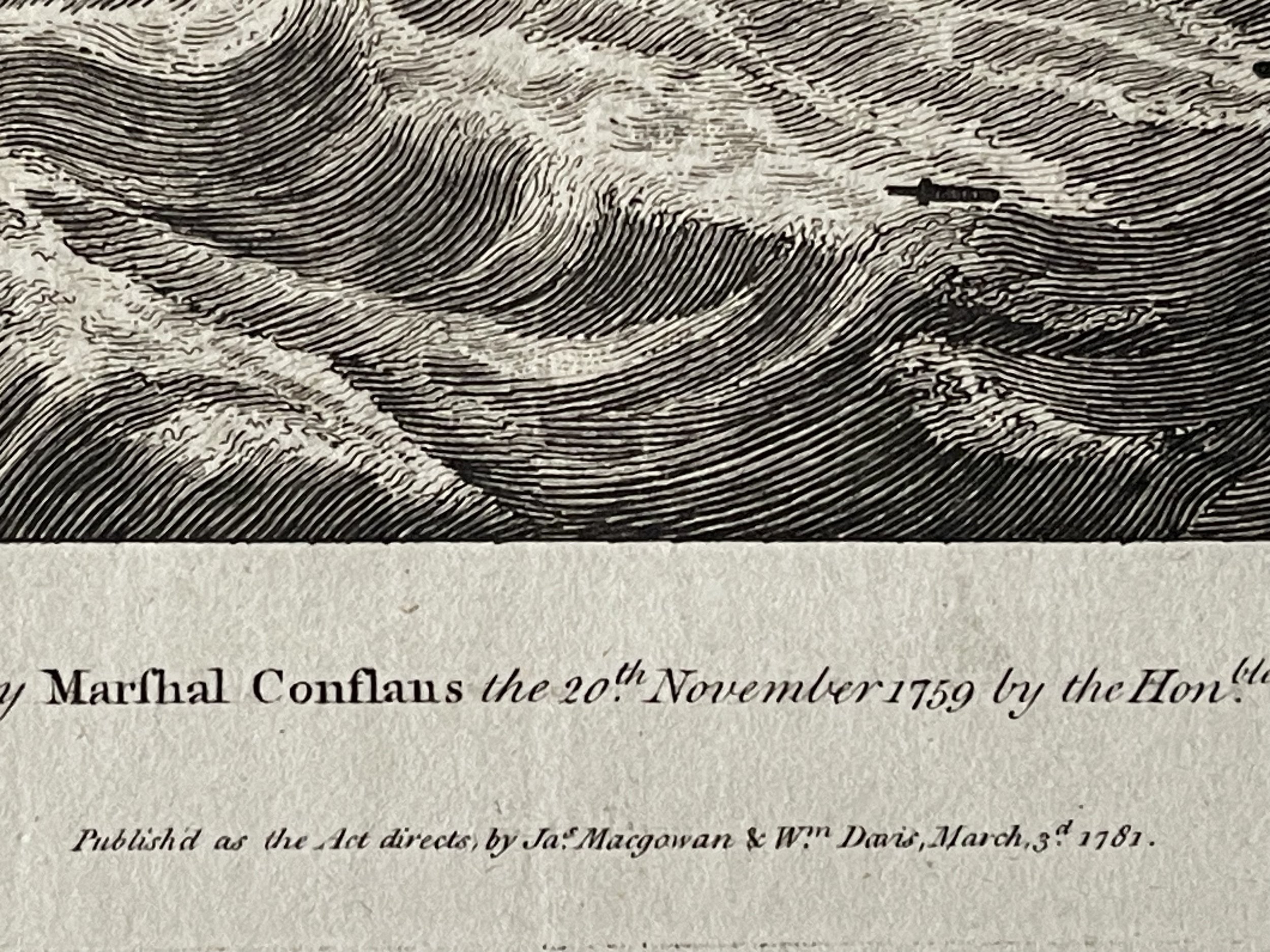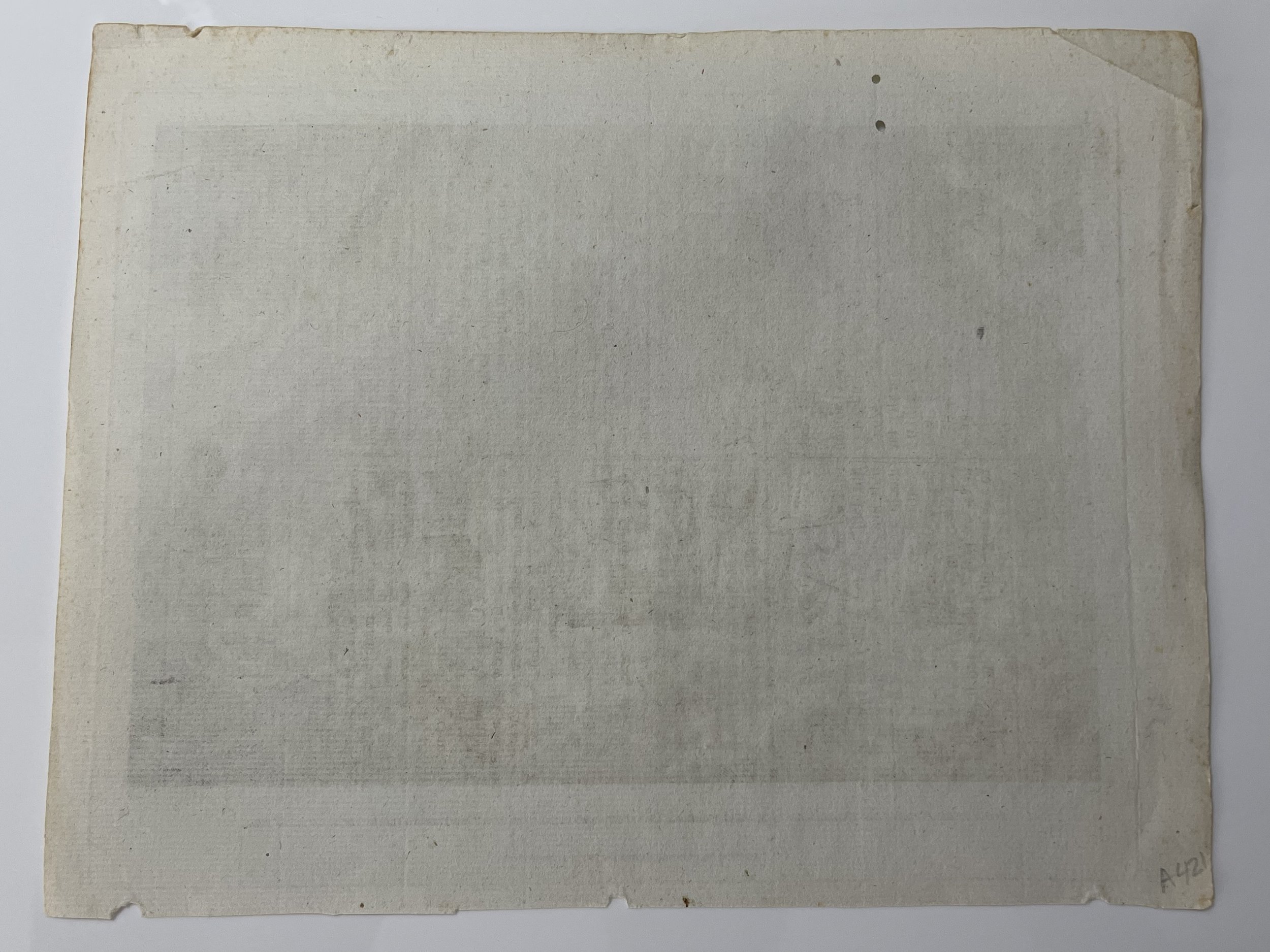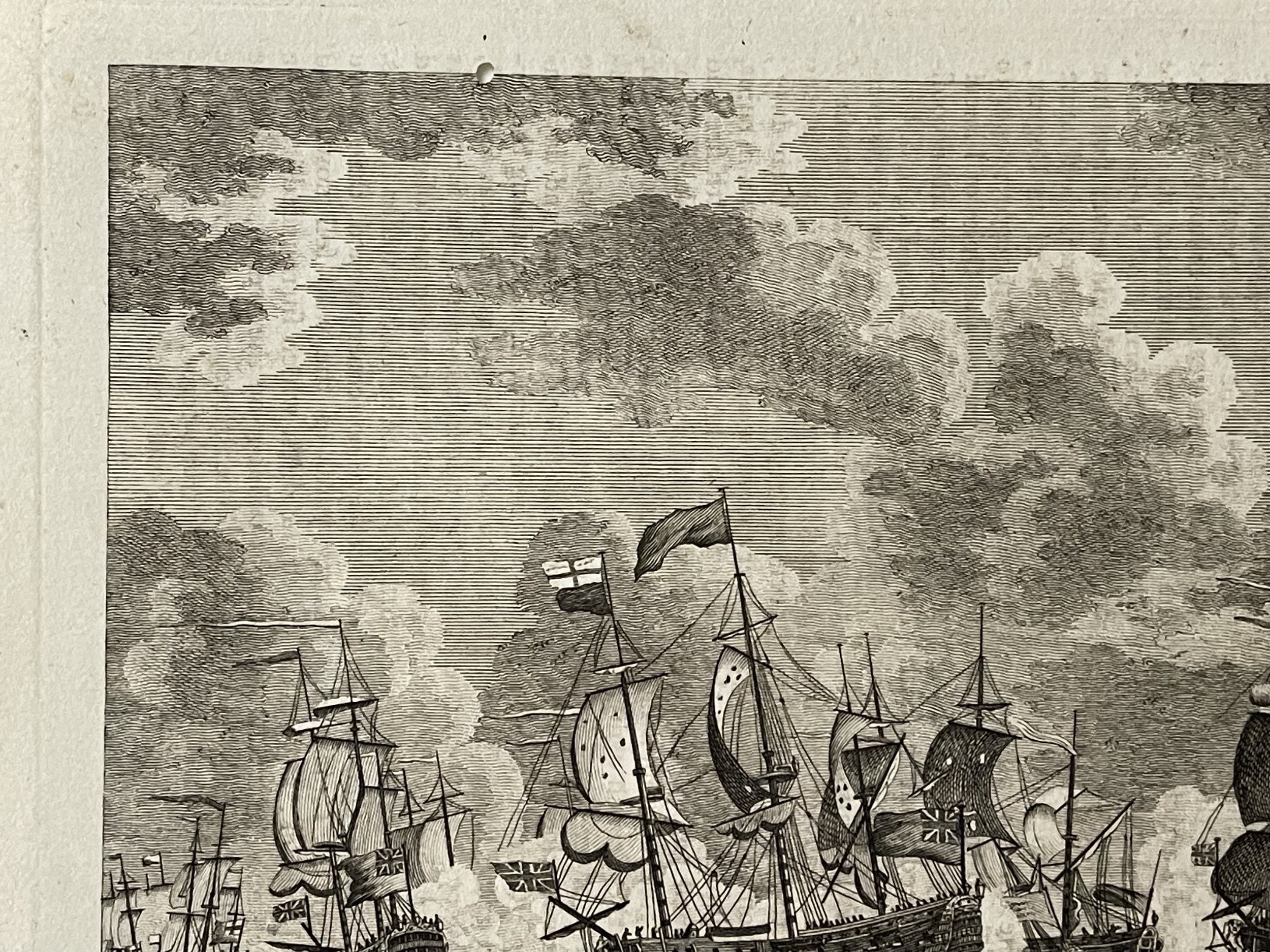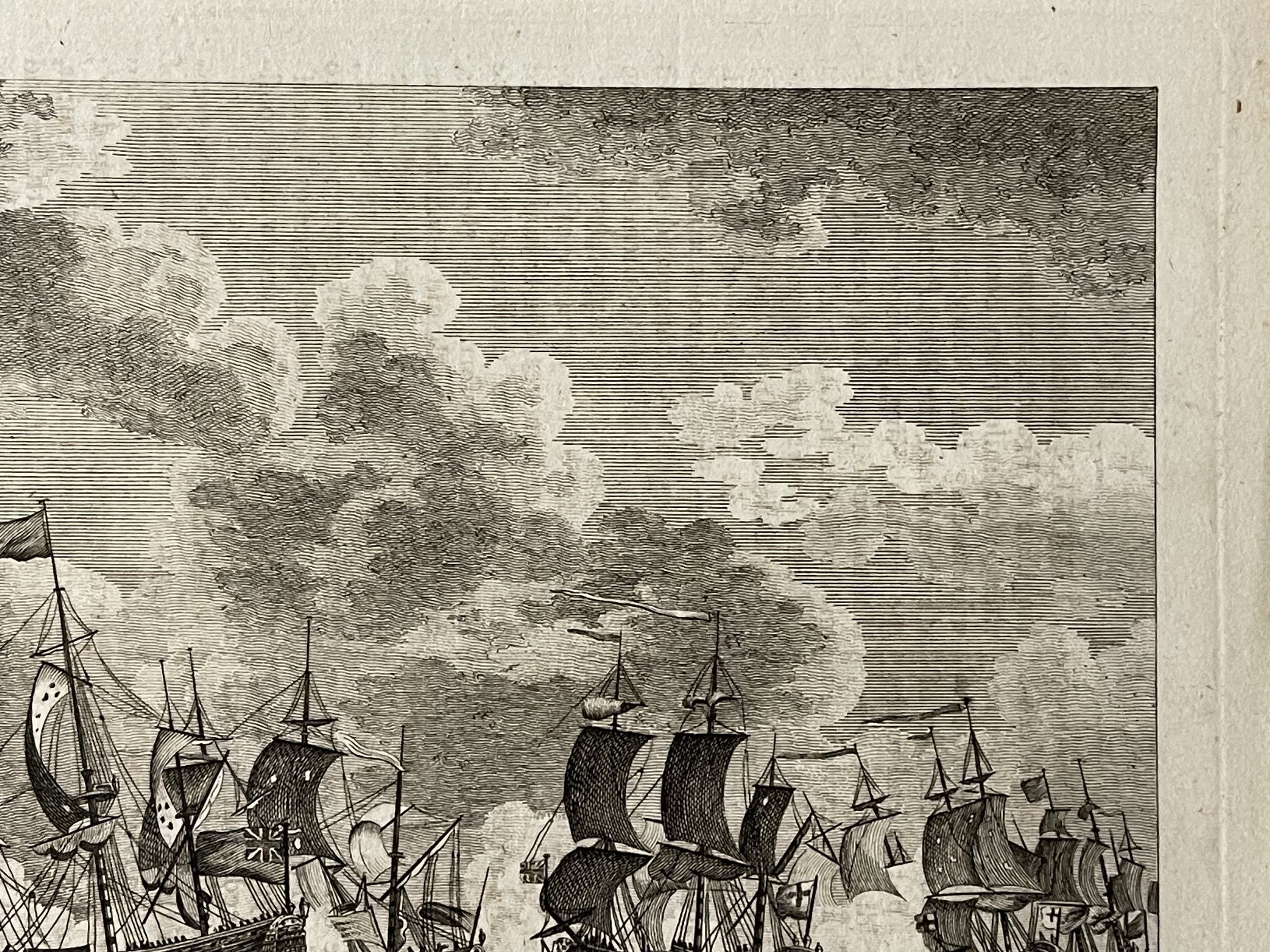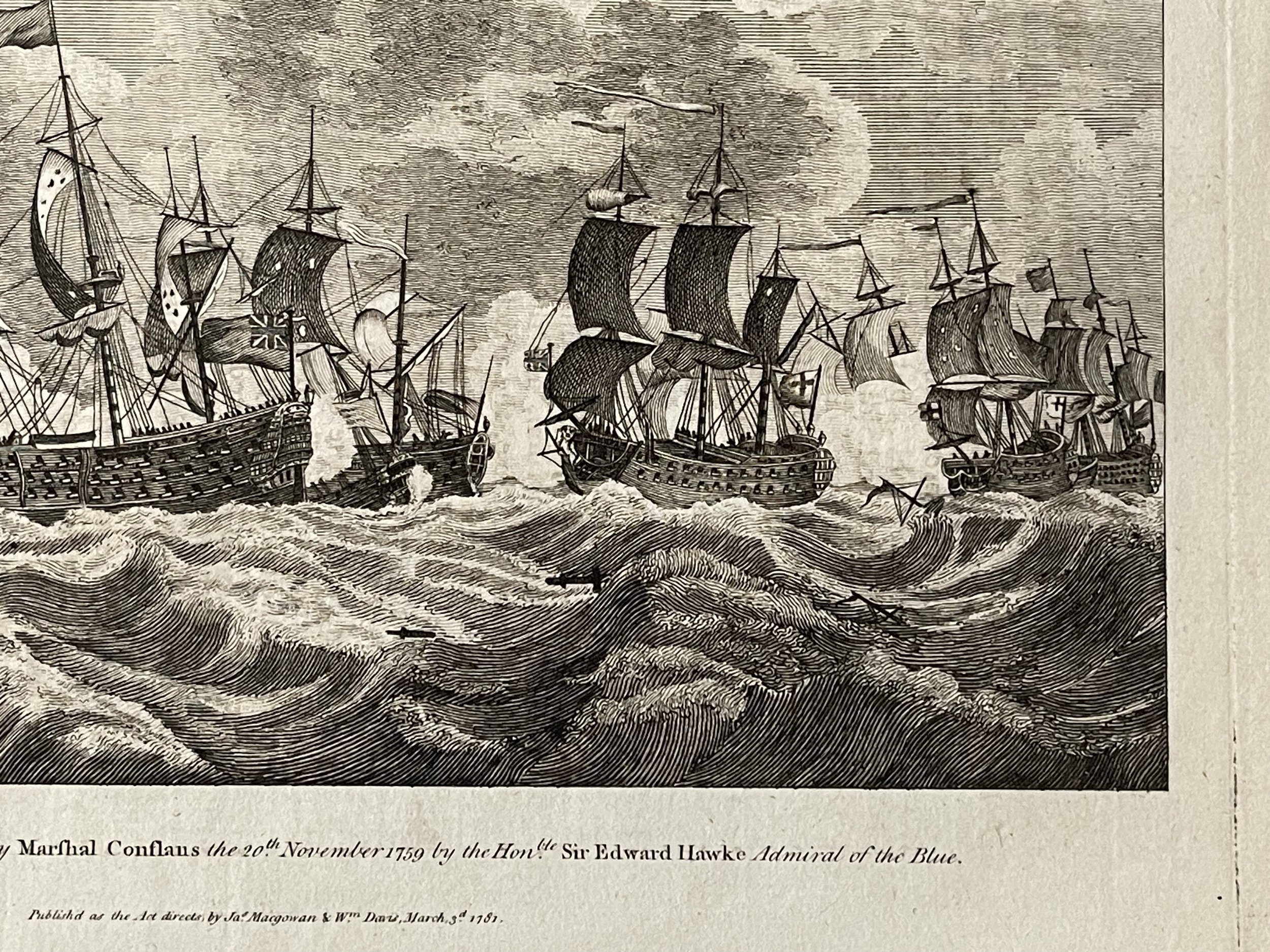Battle of Quiberon Bay - JA Macgowan & W Davis - 1781
Defeat of French fleet off Belle-Isle, depicting sinking of Le Superbe; flotsam in foreground. 1761
The Battle of Quiberon Bay (known as Bataille des Cardinaux in French) was a decisive naval engagement during the Seven Years' War. It was fought on 20 November 1759 between the Royal Navy and the French Navy in Quiberon Bay, off the coast of France near Saint-Nazaire. The battle was the culmination of British efforts to eliminate French naval superiority, which could have given the French the ability to carry out their planned invasion of Great Britain. A British fleet of 24 ships of the line under Sir Edward Hawke tracked down and engaged a French fleet of 21 ships of the line under Marshal de Conflans. After hard fighting, the British fleet sank or ran aground six French ships, captured one and scattered the rest, giving the Royal Navy one of its greatest victories, and ending the threat of French invasion for good.
The battle signalled the rise of the Royal Navy in becoming the world's foremost naval power, and, for the British, was part of the Annus Mirabilis of 1759.
James Macgowan – Publisher in the mid 1700s.
William Davis – Publisher / Printer – 1780-1782
Beautiful etching and engraving in excellent condition. Pricing and grading commensurate.
Defeat of French fleet off Belle-Isle, depicting sinking of Le Superbe; flotsam in foreground. 1761
The Battle of Quiberon Bay (known as Bataille des Cardinaux in French) was a decisive naval engagement during the Seven Years' War. It was fought on 20 November 1759 between the Royal Navy and the French Navy in Quiberon Bay, off the coast of France near Saint-Nazaire. The battle was the culmination of British efforts to eliminate French naval superiority, which could have given the French the ability to carry out their planned invasion of Great Britain. A British fleet of 24 ships of the line under Sir Edward Hawke tracked down and engaged a French fleet of 21 ships of the line under Marshal de Conflans. After hard fighting, the British fleet sank or ran aground six French ships, captured one and scattered the rest, giving the Royal Navy one of its greatest victories, and ending the threat of French invasion for good.
The battle signalled the rise of the Royal Navy in becoming the world's foremost naval power, and, for the British, was part of the Annus Mirabilis of 1759.
James Macgowan – Publisher in the mid 1700s.
William Davis – Publisher / Printer – 1780-1782
Beautiful etching and engraving in excellent condition. Pricing and grading commensurate.
Defeat of French fleet off Belle-Isle, depicting sinking of Le Superbe; flotsam in foreground. 1761
The Battle of Quiberon Bay (known as Bataille des Cardinaux in French) was a decisive naval engagement during the Seven Years' War. It was fought on 20 November 1759 between the Royal Navy and the French Navy in Quiberon Bay, off the coast of France near Saint-Nazaire. The battle was the culmination of British efforts to eliminate French naval superiority, which could have given the French the ability to carry out their planned invasion of Great Britain. A British fleet of 24 ships of the line under Sir Edward Hawke tracked down and engaged a French fleet of 21 ships of the line under Marshal de Conflans. After hard fighting, the British fleet sank or ran aground six French ships, captured one and scattered the rest, giving the Royal Navy one of its greatest victories, and ending the threat of French invasion for good.
The battle signalled the rise of the Royal Navy in becoming the world's foremost naval power, and, for the British, was part of the Annus Mirabilis of 1759.
James Macgowan – Publisher in the mid 1700s.
William Davis – Publisher / Printer – 1780-1782
Beautiful etching and engraving in excellent condition. Pricing and grading commensurate.
Code : A421
Cartographer : Cartographer / Engraver / Publisher: James Macgowan & William Davis
Date : Publication Place / Date - Circa 1781
Size : Sheet size: 26 x 20.5 cm
Availability : Available
Type - Genuine - Antique
Grading A to A+
Where Applicable - Folds as issued. Light box photo shows the folio leaf centre margin hinge ‘glue’, this is not visible otherwise.
Tracked postage, in casement. Please contact me for postal quotation outside of the UK.

